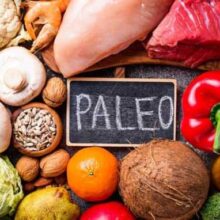How Slushy Drinks Can Lead to Glycerol Intoxication in Children
In the whirlwind of daily parenting, it’s easy to overlook the small choices that could have significant impacts on our children’s health. We often indulge their sweet cravings, especially during moments of joy and celebration, without a second thought. Yet, a recent series of alarming incidents have shed light on a seemingly innocent treat that poses a hidden danger: the iced slushy drink. While these vibrant, frosty beverages are a favorite among kids, two families’ experiences have sparked a crucial conversation on the importance of scrutinizing what we offer our little ones. This article delves into these eye-opening stories and uncovers the surprising health risks associated with popular kids’ refreshments, guiding parents on how to navigate these treacherous waters with informed caution.
Let’s embark on this enlightening journey together, exploring not just the hidden dangers lurking in our children’s cups but also how we can protect them from potential harm, ensuring their smiles remain as bright and carefree as the treats they so dearly love.
The Hidden Dangers of Popular Kids’ Refreshments
The story of Beth Green and her four-year-old son, Albie, serves as a stark reminder of the unseen risks in some of our children’s favorite treats. Following an innocent after-school outing to a bowling alley on a crisp October day, Albie’s excitement over a strawberry-flavored slushy drink quickly turned into a parent’s worst nightmare. Within just thirty minutes of sipping on the vibrant, icy concoction, Beth noticed a drastic change in her son’s behavior. From being “happy and excited,” Albie became “tired and agitated,” a shift so sudden that it left Beth concerned and confused.
The situation escalated rapidly. After dropping off a friend, Albie began to exhibit even more alarming symptoms: hallucinations, clawing at his face, and a terrifying cycle of screaming and collapsing into a limp state. Faced with her son’s unresponsive condition, Beth made the critical decision to rush him to the hospital, a choice that likely saved Albie’s life. Upon arrival, the medical team sprang into action, providing emergency care to revive the unconscious boy. After three harrowing days in the hospital, Albie was fortunate enough to return home, his recovery a relief to his family but a stark warning to others.
This incident underscores a crucial point: the treats we often deem harmless for our children can carry hidden dangers. Albie’s reaction to the slushy drink was a frightening wake-up call, highlighting the need for parents to be more vigilant about the ingredients and potential health risks of popular refreshments.
Another Close Call: The Story of Angus
Image Credits: Kennedy News and Media
In a tale mirroring the distressing experience of Beth Green and her son, another family faced a terrifying ordeal that brings the potential dangers of popular children’s drinks into sharper focus. Victoria Anderson, a mother from Port Glasgow, Scotland, shared how a routine shopping trip turned into a nightmare when her three-year-old son, Angus, collapsed after consuming a raspberry-flavored slushy drink.
The day had started like any other, with Victoria and her children enjoying a bit of shopping. When Angus’s eyes were caught by the bright pink swirl of a slushy in a local corner shop, Victoria thought little of treating him to his first-ever slushy experience. However, the joy of this small treat quickly dissolved. Approximately half an hour after sipping on the slushy, Angus suddenly became unresponsive. Victoria watched in horror as her son’s body went limp and “stone cold,” a moment no parent is ever prepared for.
The swift arrival of paramedics and the rush to Glasgow Children’s Hospital were fraught with anxiety and fear for what might come next. It was two agonizing hours before Angus regained consciousness, his blood sugars having plummeted to dangerously low levels. Thanks to the prompt and expert care of the medical team, Angus made a full recovery, a fortunate end to an episode that could have had a much different outcome.
This incident, coming so closely on the heels of Albie’s scare, serves as a chilling reminder of the potential risks associated with seemingly innocuous treats like slushy drinks. The stories of Angus and Albie are not just isolated events but a call to action for parents to critically assess what we consider to be harmless indulgences for our children.
Understanding Glycerol Intoxication
Parents have been urged NOT to give kids slushy ice drinks after children have been hospitalised. The Food Standards Authority says the drinks can be toxic, and even having one slushy can be a risk for young kids. This is due to the levels of glycerol in them. The new FSA guidance states: ‘At very high levels of exposure – typically when several of these products are drunk by a child in a short space of time – glycerol intoxication could cause shock, hypoglycaemia and loss of consciousness.’ For more details on the story head to Netmums.com #slushy #hotweathersafety #childsafety #FSA #netmums
At the heart of these alarming incidents lies a condition known as glycerol intoxication, a term unfamiliar to many but critically important for parents to understand. Both Albie and Angus’s near-fatal reactions were attributed to this condition, resulting from their consumption of slushy drinks. But what exactly is glycerol intoxication, and how can it pose such a severe risk to young children?
Glycerol, also known as E422 in the world of food additives, is a common ingredient in slushy drinks. Its primary role is to prevent the liquid from freezing solid, maintaining the slush-like consistency that makes these beverages so appealing. Additionally, glycerol serves as a sugar-free sweetener, contributing to the drink’s flavorful allure without the added calories of sugar. While generally considered of low toxicity and safe for consumption in moderate amounts by adults and older children, the situation changes dramatically when it comes to younger kids.
The bodies of small children, particularly those under the age of four, process substances like glycerol differently due to their lower body weight and developing metabolic systems. When consumed, glycerol can build up in their systems, leading to a range of symptoms including sweating, irritability, lethargy, and in severe cases, shock, hypoglycemia (low blood sugar), and loss of consciousness. These symptoms are indicative of glycerol intoxication, a condition that can escalate quickly if not addressed promptly.
The cases of Albie and Angus highlight a critical gap in awareness among parents and caregivers about the potential dangers of glycerol-containing products. While these drinks may seem harmless and enjoyable treats, the reality is that their effects on young children can be profound and potentially life-threatening.
Guidance from the Food Standards Agency (FSA)
In an era where food and beverage choices are more varied and complex than ever, the guidance from the Food Standards Agency (FSA) emerges as a beacon of clarity for concerned parents. Recognizing the potential health hazards posed by certain additives in popular children’s drinks, the FSA has undertaken a crucial role in advising and protecting the public. Here’s a closer look at the expanded guidance from the FSA and what it means for parents:
New Guidelines on Slushy Drinks
The FSA has responded to reports of adverse reactions in children consuming slushy drinks by issuing new guidelines. These guidelines specifically address the inclusion of glycerol (E422) in children’s beverages, a common additive that prevents the liquid from freezing solid and doubles as a sugar-free sweetener. The agency’s stance is unequivocal: slushy drinks containing glycerol should not be sold to or consumed by children under the age of four. This recommendation is grounded in scientific research, which shows that young children’s bodies cannot process glycerol in the same way as older children and adults, leading to a higher risk of glycerol intoxication.
Understanding the Risks
The FSA’s guidance is rooted in a comprehensive understanding of the risks associated with glycerol consumption in young children. Symptoms of glycerol intoxication can range from mild, such as nausea and headaches, to severe, including hypoglycemia (low blood sugar), lethargy, and even loss of consciousness. By setting a clear age threshold, the FSA aims to prevent these potentially dangerous reactions and ensure the safety of the youngest and most vulnerable members of our society.
Role of Parents and Guardians
While the FSA provides regulatory guidance and recommendations, the agency also emphasizes the critical role of parents and guardians in safeguarding their children. Awareness and adherence to these guidelines can significantly reduce the risk of adverse reactions. The FSA encourages parents to be proactive in checking labels for glycerol and other additives and to make informed decisions about what beverages are safe for their children to consume.
Industry Response
The FSA’s guidelines have also prompted a positive response from manufacturers, many of whom have already taken steps to reduce or eliminate glycerol in products targeted at young children. This collaborative approach between regulatory bodies and the food industry is essential for creating a safer food environment for children. The FSA commends these efforts and continues to work with manufacturers to ensure compliance with the guidelines, ultimately aiming to remove high-risk additives from children’s products altogether.
Continuous Monitoring and Reporting
Recognizing that the landscape of food safety is continuously evolving, the FSA remains committed to monitoring the situation and updating guidelines as new information becomes available. The agency also encourages parents to report any adverse reactions potentially linked to food additives, as this data is crucial for ongoing research and the development of future guidelines.
The FSA’s guidance on slushy drinks and glycerol consumption represents a significant step forward in protecting children’s health. By staying informed about these recommendations and taking proactive steps, parents can play a pivotal role in ensuring the safety and well-being of their children.
How to Safeguard Your Children
In light of the concerning revelations about the risks associated with certain popular children’s drinks, parents and guardians must arm themselves with knowledge and strategies to protect their little ones. Here are practical tips to help you navigate this landscape safely:
Check Labels for Glycerol (E422):
Before giving your child a beverage or food product, take a moment to read the ingredients list. Glycerol, also known as E422, can have adverse effects on young children due to their smaller body size and metabolic capacity. By being vigilant about checking labels, you can prevent unintentional exposure to this substance. This practice not only helps in avoiding glycerol but also in cultivating a habit of being aware of what goes into our children’s bodies, leading to healthier choices overall.
Moderation is Key:
Even for older children who may not be as susceptible to the immediate risks of glycerol intoxication, it’s crucial to monitor their consumption of slushy drinks and similar treats. Encouraging moderation teaches children valuable lessons about balance and helps prevent other health issues associated with excessive sugar and additive intake. Limiting these treats to special occasions or as an infrequent reward can help maintain their appeal without compromising health.
Seek Alternatives:
There’s a world of delicious and nutritious alternatives to slushy drinks that don’t rely on potentially harmful additives for their appeal. Engaging your children in making homemade fruit smoothies or preparing chilled fruit-infused water can be a fun activity that also serves as an educational opportunity about healthy eating. These alternatives provide essential vitamins and minerals, and by involving your children in the preparation process, they’re more likely to enjoy and choose these healthier options.
Hydration with Water:
Water should be the cornerstone of hydration for children, particularly during periods of increased activity or heat. Encouraging your child to choose water over sugary or additive-laden drinks can set a foundation for healthy hydration habits that last a lifetime. Consider using fun water bottles, adding slices of fruits for flavor, or setting a good example by choosing water for yourself to make water more appealing to them.
Immediate Action if Symptoms Appear:
If you notice any signs of distress or unusual symptoms in your child after consuming a slushy drink or any other food product, it’s critical to act swiftly. Symptoms such as lethargy, irritability, or excessive sweating could indicate a reaction that requires medical attention. Quick action can prevent more severe health issues and ensures your child receives the care they need when they need it.
Educate Your Family:
Ensuring everyone in the family, including siblings, grandparents, and caregivers, is aware of the risks associated with certain food additives and the importance of dietary vigilance can create a supportive environment for healthy choices. Sharing knowledge and setting collective standards for what is considered acceptable consumption can help protect your children, even when you’re not directly supervising them.
Stay Informed:
The world of food safety and nutrition is ever-evolving, with new findings and guidelines emerging regularly. Staying informed about the latest advice from reputable sources like the Food Standards Agency ensures that you’re equipped with the most current information to make the best decisions for your children’s health. Subscribing to newsletters, attending relevant workshops, or joining parent-focused health forums can be excellent ways to keep your knowledge up to date.
Navigating the Risks: A Guide to Safer Choices for Our Children
As parents, our primary concern is the well-being and safety of our children. The stories of Albie and Angus serve as a sobering reminder of the importance of vigilance in the seemingly mundane choices we make for our children’s diets. By staying informed, reading labels, and opting for safer alternatives, we can protect our little ones from unseen dangers and ensure they grow up healthy and happy. Let’s take these lessons to heart and make conscious, informed decisions that safeguard our children’s health and futures.
The post How Slushy Drinks Can Lead to Glycerol Intoxication in Children appeared first on Healthy Holistic Living.












